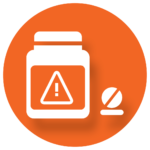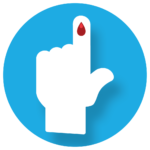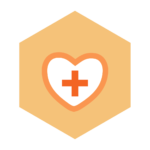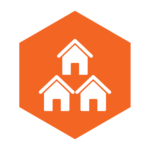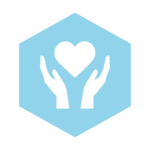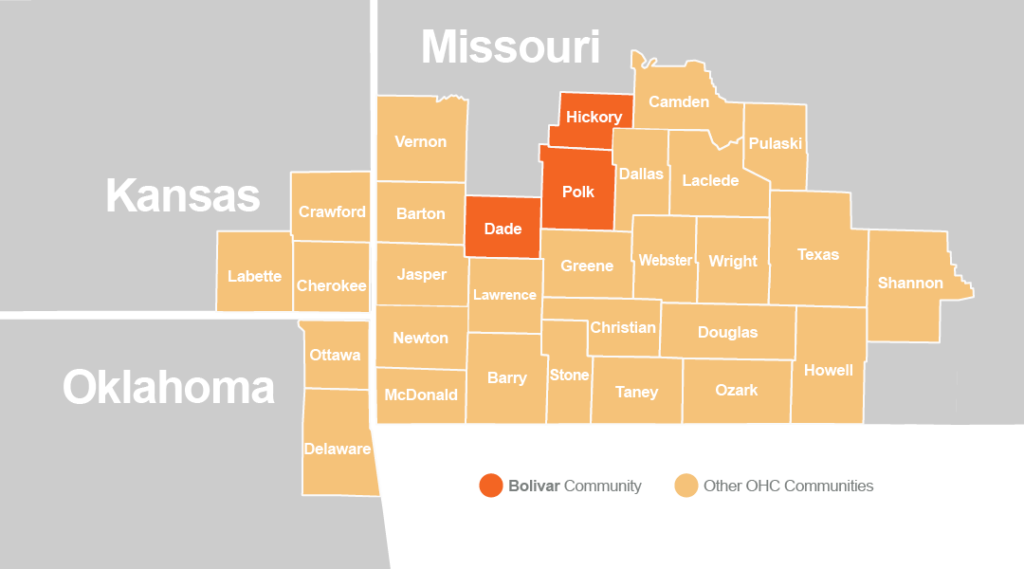
Service Area
The Bolivar Community is made up of three Missouri counties: Polk, Hickory and Dade. The data collected for the Bolivar Community service area was based on the only participating hospital serving this area, Citizens Memorial Hospital, the only Federally Qualified Health Center, Ozark Community Health Center, and the Dade, Hickory and Polk County Health Departments.
Citizens Memorial Healthcare system (CMH) serves thousands of patients each year between their hospital and federally certified rural health clinics; CMH is committed to providing high quality care to their patients and residents living in their seven-county service region.
Ozark Community Health Center (OCHC) serves many patients throughout each year. Along with regular medical services, they are well established for providing access to dental services throughout the Bolivar Community. With that includes their providing access to care for many by offering a sliding scale fee discount to self-pay patients, including those who have health insurance, but qualify by income.
The county seat for Polk County is Bolivar, which is also the largest community in the county with a population just over 32,000 residents. Bolivar is located in Southwest Missouri, 30 miles north of Springfield, MO. It provides many conveniences and services to the rural area in which it is located. Greenfield, with a population of 1200 residents, is the county seat for Dade. Hermitage, with a population of 508 residents, is the county seat of Hickory.
Population Overview
The Ozarks Health Commission (OHC) noted several important demographic and population trends within the three-county Bolivar Community. This community is home to 48,730 individuals, an increase of 10.9% between 2000 and 2010. Nearly 22% of community residents being minors under the age of 18, while approximately 41% are over the age of 55. Meaning, that the population is, on average, older than both the region and nation. Older residents are more likely to be living with chronic illnesses and require access to more health services. Further, approximately 57% of the community is within the age grouping of 18-64, which drives the workforce in the community.
In the three-county area, approximately 22% of the total population is living with a disability, which is higher than the regional rate of 17.3% and the national rate of 12.6%. This may contribute to access to care and health disparities amongst the residents living in the community with a disability. Factors such as this, must be considered when planning for improvement in rural versus urban areas.
Other factors that contribute to the overall vulnerability of the population of the community. Include people living in poverty, minorities, and the elderly. These populations may often experience higher rates of chronic illness and worse health outcomes.
Population Overview
| Dade County | Hickory County | Polk County | Bolivar Community | ||
|---|---|---|---|---|---|
| Socio-Economic Status | Below Poverty | 0.87 | 0.62 | 0.31 | 0.60 |
| Unemployed | 0.91 | 0.75 | 0.49 | 0.72 | |
| Income | 0.76 | 0.86 | 0.59 | 0.74 | |
| No High School Diploma | 0.59 | 0.66 | 0.41 | 0.55 | |
| Household Composition & Disability | Aged 65+ | 0.86 | 1.00 | 0.40 | 0.75 |
| Under Age 18 | 0.13 | 0.02 | 0.52 | 0.22 | |
| Disability Status | 0.67 | 0.91 | 0.40 | 0.66 | |
| Single-Parent Households | 0.47 | 0.01 | 0.82 | 0.44 | |
| Minority Status & Language | Minority | 0.50 | 0.22 | 0.52 | o.41 |
| Speaks English “Less than Well” | 0.47 | 0.84 | 0.32 | 0.55 | |
| Housing Type & Transportation | Multi-Unit Structures | 0.22 | 0.00 | 0.73 | 0.32 |
| Mobile Homes | 0.80 | 1.00 | 0.55 | 0.78 | |
| Crowding | 0.92 | 0.20 | 0.83 | 0.65 | |
| No Vehicle | 0.18 | 0.16 | 0.39 | 0.24 | |
| Group Quarters | 0.54 | 0.04 | 0.81 | 0.46 | |
| Orange highlight: The population in this county is more vulnerable than 90% of all other counties in its respective state. | |||||
| Blue highlight: The population in this county is more vulnerable than 85% of all other counties in its respective state. | |||||
indicative of greater vulnerability. Percentiles are from the CDC’s SVI data.
Assessed Health Issues
Commission stakeholders began the RHA process with analysis of publicly available health data (secondary data) and participating health systems’ emergency room utilization data (primary data) to identify health issues of greatest concern across the region. The result was a ranked list of eight Ozarks Health Commission Region health issues. A full description of the health issues and indicators used can be found in the OHC Regional Health Assessment.
To represent diverse views from across the region and population, qualitative data was garnered. Across the OHC Region these viewpoints were solicited via 75 individual interviews, 10 focus groups and 2,638 surveys. Methodologies used for the initial scoring/ranking of the health issues and the full report of the qualitative work can be found in the OHC Regional Report. This prioritization information can be used by organizations to develop community health improvement plans, guide decision making, and foster collaboration across initiatives for collective community impact.
- Affordable, quality childcare
- Affordable housing
- Drug and other substance abuse, education, prevention, and early intervention services
- Drug and other substance abuse treatment and rehabilitation services, including detox
- Counseling services for mental health issues such as depression, anxiety, trauma, or others for adolescents and children
- Integrated care, or where people can get medical care and counseling at the same time
- Counseling services for mental health issues such as depression, anxiety, trauma, or others for adults
- Social services (other than healthcare) for people experiencing homelessness
- Emergency mental health services for issues such as suicidal thinking or actions, homicidal thinking or actions, self-harm, or harm to others
- Coordination of patient care between the hospital and other clinics, private doctors, or others
Bolivar Community Health Priorities
(Click a health priority below to learn more)
Each Commission Community convened stakeholders to assess the feasibility of addressing the health issues identified through primary and secondary data sources, and further illuminated the qualitative community feedback. In the Bolivar Community, this was organized By the Polk County Health Center and Community Connections. Local data was collected from the local hospital, CMH, and secondary data was collected and analyzed from a variety of sources. Listening groups were also held to collect partner and community input. Finally, local survey data was collected by interviewing local partners and community members.
Substance Use & Recovery
Substance use as a Behavorial health disorder, known as a substance use disorder (SUD), encompasses the use of intoxicating substances in a manner which negatively effects the persons global wellness. For the purposes of this report, substances used include, but are not limited to, alcohol, opiates, stimulants, narcotics, benzodiazepines, and other prescribed or illicit substances that could cause poisoning. (Not included are things like carbon monoxide poisoning, pesticides, or venomous animals or plants.)
Recovery from substance use disorder is a process through which the individual improves that health and wellness, starts living a self-directed life and striving to reach a more fulfilling purpose. This comes in a variety of pathways, from public health and behavioral health providers, social supports, community resources and mutual aid. There are currently 22.75 million individuals openly in recovery in the US. Only 1 in 4 people needing substance use support and assistance will receive services.
The number one leading cause of death among adults aged 18-44 in Missouri is drug poisoning. Over 70% of these deaths involve opioids. In the Bolivar Community, the prevalence of substance use disorder (among Medicare patients) is greater than the rest of Missouri at 3.5%.
CMH conducted an assessment in relation to substance use and mental health which included the service areas of Polk, Hickory, and Dallas counties. The assessment found that the Medication Assisted Therapy program is currently serving 250 patients per month, with 18-20 new patients joining the program each month.
During the assessment, CMH found that Neonatal Abstinence Syndrome (NAS) rates are more than state averages. NAS is a group of conditions caused when a baby withdraws from certain drugs they are exposed to in the womb before birth. NAS is most often caused when a person uses opioids during pregnancy.
In the Bolivar Community, per 1,000 births, the rate of babies born with NAS is 8.1 babies in Dallas County, 8.7 babies in Hickory County, and 15.5 babies in Polk County with NAS. These rates are high compared to overall rate for Missouri, 7.51 babies born with NAS per 1,000 births.
The number one leading cause of
death among adults aged 18-44 in
Missouri is drug poisoning.
Over 70% of these deaths involve opioids.
Mental Health
People in the Bolivar Community are more likely to suffer from depression than people in the rest of Missouri and the U.S.
Mental health includes a person’s emotional, psychological and social well-being. It affects how individuals think, feel and act. A person’s mental health status also contributes to how they handle stress, relate to others, and make choices. Mental health is important at every stage of life, from childhood and adolescence through adulthood. Many factors contribute to mental health problems, including biology (factors such as genes or brain chemistry), life experiences (such as trauma or abuse) and family history. Within the broad category of mental health, mental illness specifically refers to all diagnosable mental disorders. Mental illness can be chronic or acute. An acute mental health crisis will require different intervention than managing a chronic mental illness.
Community-level data used to analyze and prioritize mental health is limited, but what local data is available is convincing and of great concern among care providers, public health and healthcare partners, media and the community. Poor mental health, the number of self-reported poor mental health days in a 30-day period, and the rate of depression in the Bolivar Community is higher than in Missouri and the U.S. Moreover, the Bolivar Community has a suicide mortality rate at least 48% worse than the national average.
Obesity
Obesity is a chronic health condition that concerns an excessive amount of body fat. Often times obesity is inherited, related to physiological and environments factors, (Social Determinants) and a combination of diet, physical activity and exercise abilities. Over time obesity can lead to multiple other concerning chronic conditions and diseases such as, heart disease, type two diabetes, and some cancers.
Heart disease is a chronic health condition that refers to multiple types of heart conditions. Heart disease is the leading cause of death in the United States. The most common type of heart disease is coronary artery disease, this leads to what’s commonly known as a heart attack; coronary heart disease prevalence is (9.6%) for the Bolivar community, which is higher than both the state and national percentages, along with the prevalence of high blood pressure at (37.4%) and high cholesterol at (40%). Heart disease is a vast concern for the Bolivar Community.
Heart disease is a vast concern for the
Bolivar Community.
Diabetes is a chronic health condition that affects how your body turns food into energy. If you have diabetes, your body either doesn’t make enough insulin or is resistant to the effects of insulin, leading to high blood sugar levels in the bloodstream. Over time, this can cause damage to multiple organs in the body, including the eyes, nerves, blood vessels and kidneys. It can also increase the risk of cardiovascular disease, decrease the body’s immunity and lead to decreased life expectancy.
The progression to diabetes can be prevented or delayed with dietary changes and an active lifestyle. However, the rates of obesity and poor physical health in the Bolivar Community are higher than the state and national average. Obesity is caused by a number of contributing factors. A person’s home or workplace can promote gaining weight; this is referred to an obesogenic environment. Modifying these environments at community and policy levels can decrease the risk of developing obesity and diabetes. For instance, workplaces can adopt wellness policies that promote or incentivize healthy eating and physical activity.
Through community input and survey, obesity was recognized as needing the most focus for improvement over other assessed health issues, except mental health and substance use. By addressing the high rates of obesity (35.2%) and poor physical health (16.7%) for the Bolivar Community we intended to lessen the rates of these issues and encourage better living with new opportunities; in turn lessening the rates of heart disease, type two diabetes, and other chronic diseases.
Social Determinants of Health
Additional data critical to understanding the health of the population and the vulnerability of the Community was discerned by examining six groupings classified as social determinants of health: Economic Stability, Education Access and Quality, Healthcare Access and Quality, Neighborhood and Built Environment, Social and Community Context and Health Behaviors. The social determinants of health have a major impact on people’s health, well-being, and quality of life while also contributing widely to health disparities and inequities. Therefore, examination of these factors is important as they play a significant role in the impact the assessed health issues have on the Bolivar Community.
Economic Stability
In the United States, 3 in 10 people live in poverty, and many people can’t afford things like healthy foods, health care, and housing. People with steady employment are less likely to live in poverty and more likely to be healthy, but many people have trouble finding and keeping a job. People with disabilities, injuries, or conditions like arthritis may be especially limited in their ability to work. In addition, many people with steady work still don’t earn enough to afford the things they need to stay healthy.
In the Bolivar Community, close to half of residents (43.3%) live at or below 200% of the federal poverty level (FPL), meaning a family of four cannot earn more than $25,750 annually. The percentage of children living in poverty is almost 10% higher, at 52.5%. In fact, the per capita income in the Bolivar Community is below the FPL for a family of four, at $22,444.00, about 27% lower than the Missouri average income and nearly 35% lower than the national average.
In addition to living in poverty, many in the Bolivar Community struggle to find affordable housing, 25.2% percent of those in the Bolivar Community live in substandard housing according to the U.S. Census Bureau and 10.5% report a severe housing cost burden. There are long wait lists for lower cost rental housing, which is contributing to higher costs.
Education Access & Quality
Education can be an indicator of health, with persons with higher levels of education often living healthier and longer lives. Only 12.7% of adults over 25 years old in the Bolivar Community do not have a high school diploma. This is very comparable to the state average of 10.01% and the national rate of 12.0%. The Bolivar Community expands with community members achieving college degrees. Those receiving their associates degree or higher account for 23.1% of the population, and 16.3% completing a bachelor’s degree or higher.
Healthcare Access & Quality
Many people in the United States don’t get the health care services they need. About 1 in 10 people don’t have health insurance. In the Bolivar Community, the rate of uninsured is significantly higher, with just under 20% of adults and just under 10% of children not having health insurance. People without insurance are less likely to have a primary care provider, and they may not be able to afford the health care services and medications they need. In addition, people may not trust the healthcare system. Some reasons for this may include lack of cultural awareness by providers, feeling unwelcome or uncomfortable in traditional clinical settings, previous negative experiences with healthcare providers, insufficient accommodations for the disabled, language barriers or clinics not having convenient times or locations.
Those with the financial means to access healthcare in the Bolivar Community have nearly 6% fewer primary care providers per 100,000 residents to seek services with than the rest of Missouri and nearly 15% fewer the U.S. Moreover, the Bolivar Community has nearly 28% fewer mental health care providers than Missouri and more than 44% fewer than the U.S. Overall, the Bolivar Community struggles with retaining and attracting healthcare providers, with more than half (56.7%) of residents living in Health Professional Shortage Areas. A rate that is nearly twice as high as the state and national rates.
Input from the community highlighted that the low-income community has few resources to travel for healthcare due to unreliable transportation. They need more basic services in community, and to work with others to get more advanced care. To assist with transportation needs CMH offers health transit services for those with Medicaid, Medicare or private health insurance. Additionally, those with Medicaid can access transportation for healthcare appointments through their Medicaid provider. However, those individually who are uninsured have limited or no access to transportation services.
Neighborhood & Built Environment
The neighborhoods people live in have a major impact on their health and well-being. Where we live affects the basics of our daily lives and health. When affordable housing is lacking it impacts families and where they can afford to live. In the Bolivar Community, 25% of community members live in substandard housing. The Bolivar Community also reports that 4.7% of community members have limited/low access to food, significantly better than the OHC Region, Missouri, and the United States. Per quarter, the Bolivar Community spends $100 less on healthy foods than the national average.
However, 26 out of 100 households in the Bolivar Community have low or slow internet access, a rate higher than the OHC Region, Missouri, and the U.S. As evidenced by the COVID-19 pandemic, this lack of connectivity can affect resident’s ability to learn, work, and play. In Hickory County, only 1 in 3 households have internet that is low or slow.
Health Behaviors
Health behaviors include individual-level behaviors, often influenced by access or quality of services, that can impact the overall health of an individual or community. Measured health behaviors include physical activity, fruit and vegetable expenditures, smoking, alcohol binge drinking, sexually transmitted infection (STI) rates and the prevalence of HIV. These behaviors can affect a wide range of health, functioning, and quality-of-life outcomes and risks.
In the Bolivar Community, physical activity has continued to decline since the prior assessment in 2017. Nearly one in four (23.0%) residents reports no leisure time physical activity, which is higher than the national average.
Analysis of fruit and vegetable expenditures are a way of determining how many community members have the inclination and ability to enjoy healthy foods. In the Bolivar Community, a household spends just over $640 on fruits and vegetables (fresh, frozen, or canned), which is just over $100 less than the national average.
Additionally, the Bolivar community has a smoking rate slightly higher than the state average, and 5.4% higher than the national averages.
Social & Community Context
Health begins where we live, learn and play. Community connections and social relationships can have a major impact on their health and well-being. Many people face challenges and dangers they can’t control, like unsafe neighborhoods, discrimination or trouble affording the things they need. The Bolivar Community has total social vulnerability index (SVI) of 0.6, with 1.0 indicating the highest possible vulnerability. This is slightly higher than both state and national averages. SVI scores that are higher show areas that are more vulnerable to socio-economic factors that can influence their health choices and behaviors.
Conclusion
The issues and trends discussed in the Bolivar Community summary have their limitations and cannot tell the full story of the health of these counties. Other factors, such as environmental, social and economic, impact individual and community health and provide context necessary to understanding the Community. Therefore, it is important to consider the Social Determinants of Health outlined in this summary when creating plans to address mental health, substance use & recovery, diabetes or any of the other assessed health issues.
Health Services Available
In addition to the websites of participating health systems and public health agencies, there are several robust resource directories available to assist consumers in locating care. These include:

